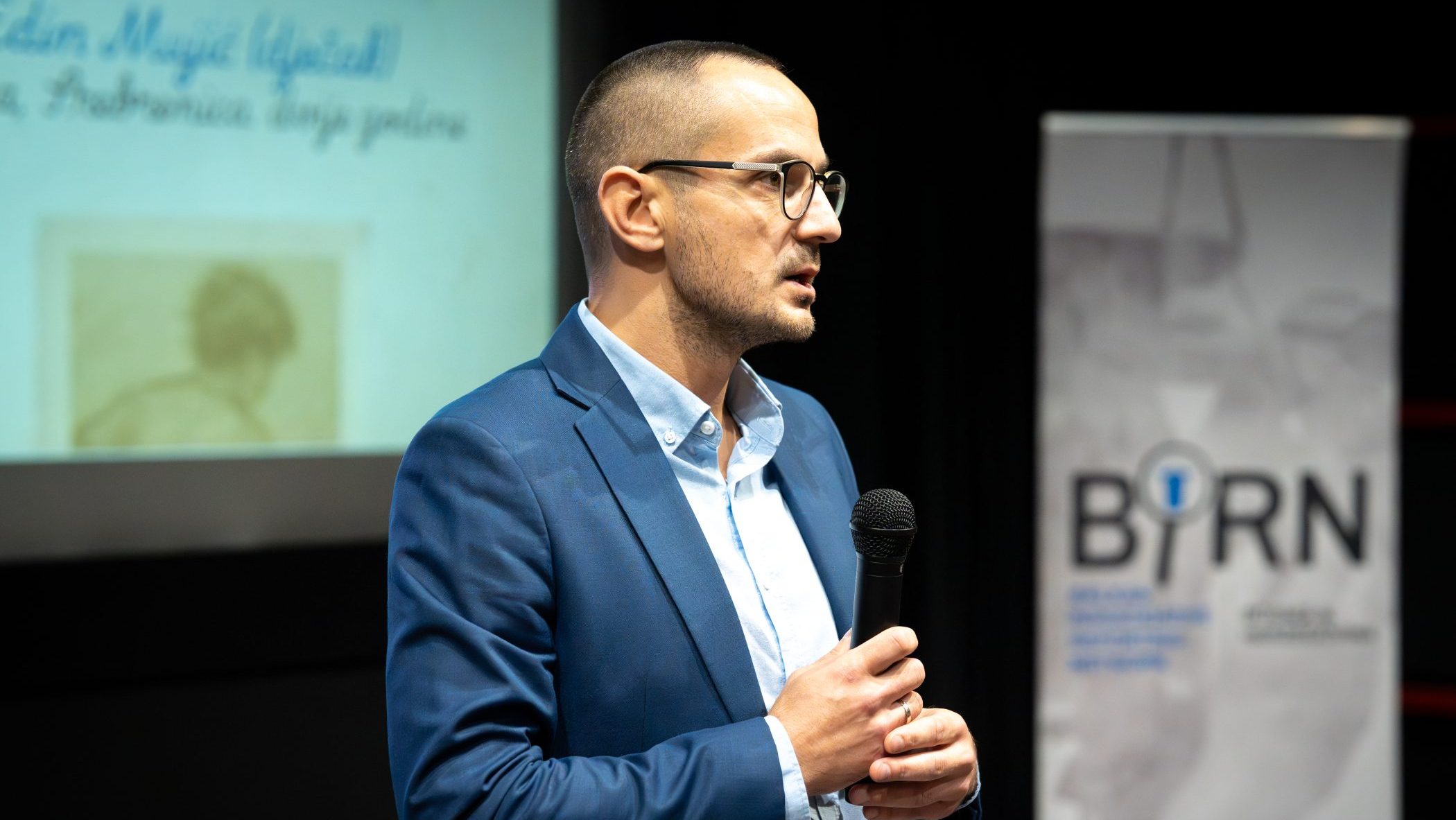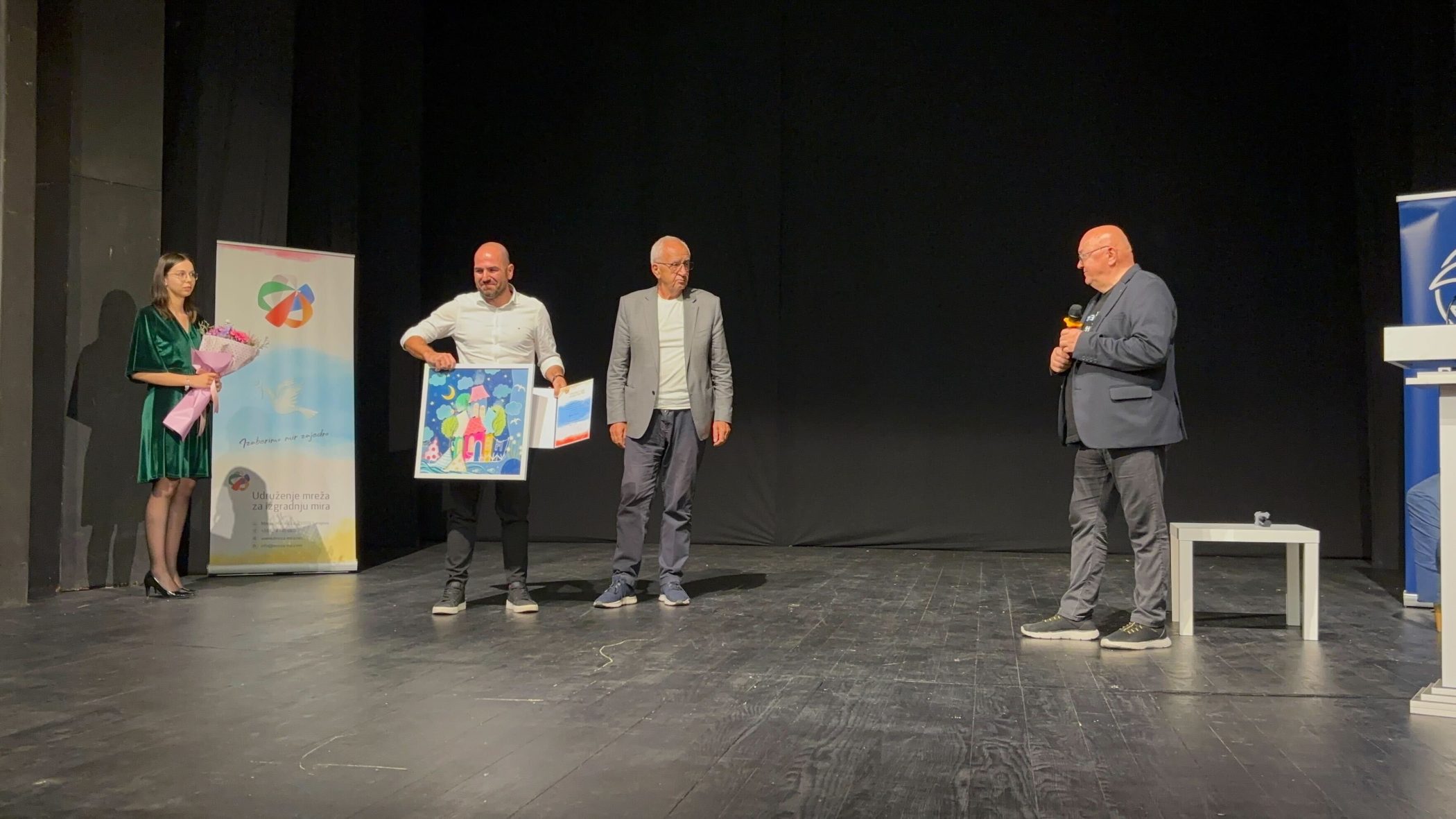This post is also available in: Bosnian
War crimes indictee Momcilo Mandic – the first Defence witness in his own trial – was overcome with emotion as he described an April 1992 attack on a Police Training Centre of Republic of BiH, and the detention of his brother.
“My brother came out of the school holding the back of his head. He just said to me ‘It’s ok’,” said a tearful Mandic, whose brother Mladjo was in charge of the Centre until the beginning of the war.
Momcilo Mandic is accused of leading the attack on the Centre. He is also charged that, the then justice minister of the former Srpska Republika BiH, he was responsible for operation of detention camps formed on the territory of Sarajevo and Foca.
Since 1984 until the first multi-party elections held in 1990, Mandic was judge of the Court II in Sarajevo, after which he was appointed assistant internal affairs minister of RBiH.
“National parties that wanted to control all MUP employees – from receptionist to minister – won at the first multi-party elections,” Momcilo Mandic said.
The indictee claims that nationalist parties requested that MUP reflects the national picture and therefore, he claims, “around 2,000 Serbs had to be laid off because there were more of them”.
“People here know that Serbs would rather go into the army and police and that is why there were more of them in those professions,” Mandic said and added that divisions in police forces took place due to replacement of individual members.
“National parties appointed staff regardless of expertise and work experience,” he claimed.
The indictee also talked about the murder of a Serb wedding ceremony participant which took place in March of 1992 and which, according to him, “had great consequences on the political situation and situation in Sarajevo”.
Nikola Gardovic was killed on March 1, 1992, resulting in a process against Ramiz “Celo” Delalic before the Cantonal court in Sarajevo.
“The Serb wedding participant was killed in Bascarsija just because he carried a Serb flag, and the consequence of that murder were brigades which were peacefully quickly removed,” indictee Mandic says.
He also said that new problems arose in April 1992, which culminated in the “dispute” at the staff training centre located in Vrace.
“The dispute took place on April 4, 1992 after 35 policemen, members of special police forces, attempted to enter the building,” the indictee told the court.
“Yugoslav National Army (JNA) tanks had already come out on the street in order to assist in establishing peace among the sides at war,” Mandic claimed, adding that General Milutin Kukanjac, who commanded the JNA corps in Sarajevo until then, issued an order for the tanks’ arrival.
Momcilo Mandic also alleged that General Kukanjac sent military police officers who then took the leading and educational staff of Bosniak and Croat nationality to the Pale police station.
According to the indictment, persons who were taken to Pale were questioned and beaten at the police station, then taken to a gymnasium in Pale where they were detained until April 10, 1992.
Mandic also said that he was in the position of deputy minister until April 8, 1992, when he was replaced at the request of Alija Delimustafic, former internal affairs minister.
The government of former Srpska Republika BiH was formed in January 1992, and the Ministry of Justice was founded in February 1992. Momcilo Mandic came to the position of minister on May 12, 1992.
The next hearing will be held on February 27 when the defence will continue questioning the indictee.

